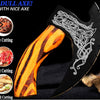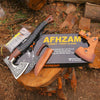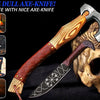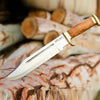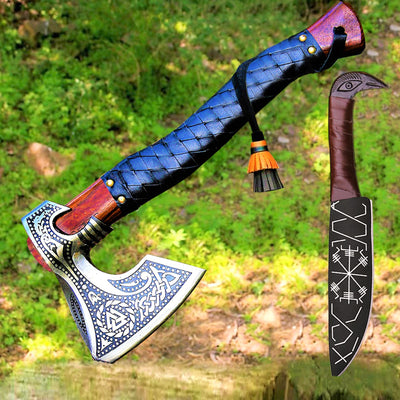How the Vikings Transformed Simple Iron into Powerful Axes Through Fire Skill and Tradition
- by Uzma Maqbool
How Viking Axes Were Made in the Viking Age
The making of Viking axes was a process that combined raw material mastery, blacksmithing skill,and cultural expression. From harvesting bog iron to forging deadly yet artistic weapons, Viking blacksmiths elevated axe-making to a craft deeply embedded in Norse society.

1. Selection and Preparation of Materials
Bog Iron and Steel:
Vikings relied on bog iron; a renewable ore collected from peat bogs. This iron was first roasted and smelted in bloomery furnaces to extract usable metal. With time, they also used steel (iron with more carbon) for cutting edges to enhance sharpness and durability.
2. Smelting and Forging Process
Blade Forging:
The extracted iron was heated in charcoal forges until pliable. Blacksmiths folded and hammered the metal repeatedly to remove impurities and increase strength. For better axes, a steel cutting edge was forge-welded onto the iron head.
Welding and Shaping:
The axe head was made by folding iron around a mandrel to create the eye (where the handle fits). The sides were welded together, and the steel edge was added last, then honed and sharpened to form the final blade.

Viking blacksmiths sometimes used differential hardening — hardening only the blade edge by quenching it in water or oil. This kept the edge sharp while leaving the rest of the axe flexible and less brittle.
4. Axe Designs and Decorative Elements
Design Types:
Axes varied in form — from large Dane axes used in war to compact bearded axes with a hooked lower edge for versatility.
Decorations and Runes:
Elite warriors often commissioned custom axes decorated with silver inlay, animal motifs, and runes. Pattern welding (layering different steel types) was also used to create stunning visual effects.
5. Handle Crafting
Handles were typically made from ash or oak, known for their strength and flexibility. They were fitted tightly into the axe head and wedged for security. Long handles were suited for two-handed combat, while shorter ones offered one-handed control for tools or throwing axes.6. Tools and Workshop Setup
Viking blacksmiths used handmade tools such as bellows, tongs, chisels, and anvils in small, often family-run forges.Bellows controlled the temperature of the fire — a process managed by eye and instinct, without modern instruments.7. Recycling and Reforging
Axes were precious. Damaged weapons were often melted and reforged, not discarded. This practice showed the Vikings’ efficiency and resourcefulness.8. Blacksmiths and Apprentices
Young apprentices often worked under master blacksmiths, learning the trade over several years. This ensured the craftsmanship passed down generations, preserving both skill and tradition.

9. Final Testing and Sharpening
Once shaped, axes were sharpened using grindstones. Some blacksmiths or warriors tested the blade by cutting wood or bone to ensure quality. Properly maintained axes could last for generations.
10. Regional Styles and Trade
Different Norse regions had distinct styles, from shape to symbolism. Some Viking axes found across Europe (in Britain, Ireland, Russia) indicate that these weapons were traded or carried into raids, spreading Scandinavian metalwork influence.
Conclusion:
The production of Viking axe was a demonstration of technical mastery, artistic ability, and cultural identity in addition to being utilitarian. Each axe, forged by patience and fire, conveyed a tale of labor, tradition, and battle. These implements continue to be enduring representations of Viking inventiveness and skill, serving as an inspiration to contemporary blacksmiths.- Posted in:
- Authentic Viking Axe
- best viking axe
- Collecting Viking Axes
- Custom Axes
- Custom Real Viking Axe
- hand-forged-viking-axe
- Handcrafted Traditional Viking Axe
- Handmade axe
- Handmade Viking Axe
- Handmade Viking Axes
- High-Quality Handmade Viking Axes
- How to make a Viking axe
- Viking Axe
- viking axe craft
- viking axe craftsmanship
- Viking Axes



